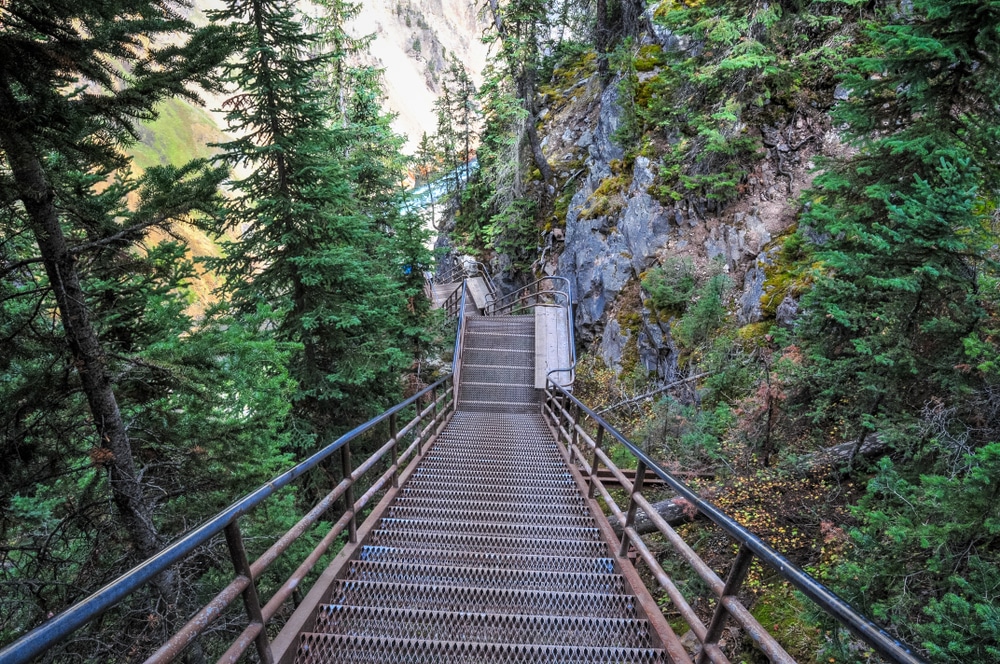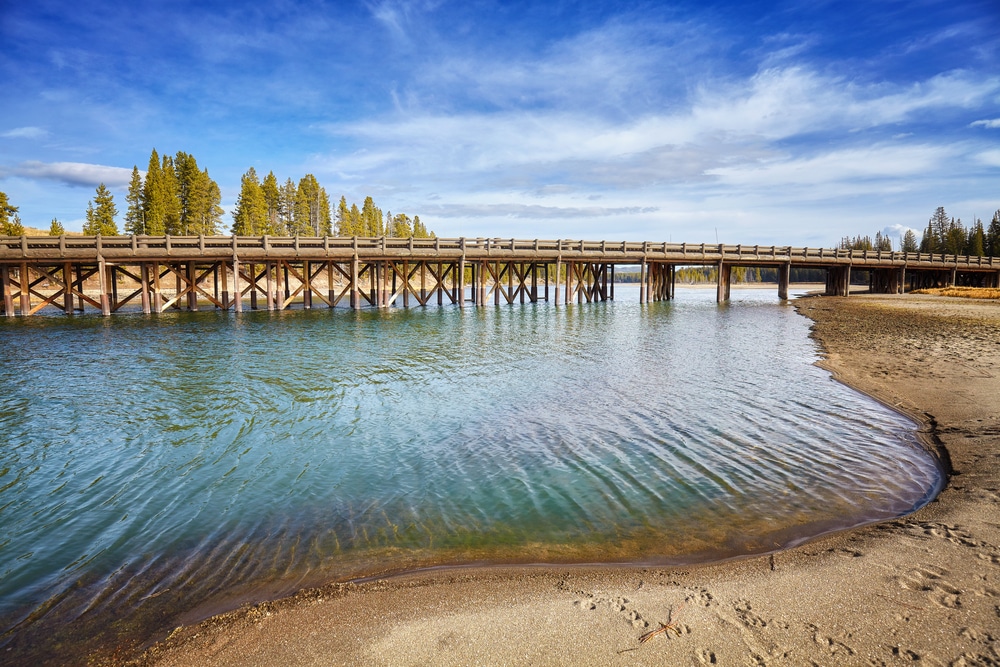Dragon’s Mouth Spring, located in the Mud Volcano area of Yellowstone National Park, is one of the park’s most intriguing hydrothermal features. Named for its resemblance to a mythical dragon’s mouth, this spring is a captivating sight due to its steamy, roaring bursts of water and steam that echo from a cavernous opening. This natural wonder not only provides a visual spectacle but also offers insight into the geothermal processes that define Yellowstone’s landscape.
Geographic and Geological Context
Dragon’s Mouth Spring is situated in the highly active hydrothermal area near the Mud Volcano, along the Grand Loop Road. The feature is essentially a cave-like hot spring with a deep, water-filled chamber. The hydrothermal activity here is a result of water interacting with the underlying volcanic activity that Yellowstone is famous for.
Description of the Feature
The spring’s dark, cavernous mouth and the constant steam emanating from it create an illusion of a dragon’s breath, while the sounds generated by the escaping steam can be likened to growls or roars. The rhythmic belching of water and steam is caused by steam explosions that agitate the water within the cavern, pushing it out into the pool at the front.
Hydrothermal Dynamics
Dragon’s Mouth Spring illustrates a classic example of a hydrothermal explosion feature. The water inside the cave is heated by the area’s volcanic activity, creating steam that builds up pressure until it forcefully ejects water and steam into the air. The distinctive sound is produced by the resonating steam as it escapes the cavern.
Visitor Experience
Visitors to Dragon’s Mouth Spring can view the feature from a safe distance via a boardwalk that provides excellent vantage points. Interpretive signs along the boardwalk explain the geological processes at work and the history of observations at the site.
What to Expect on Your Visit
- Viewing: The boardwalk allows visitors to get a close look at the spring without compromising safety. The steam and noises are best experienced up close.
- Photography: The dramatic appearance and unique characteristics of Dragon’s Mouth Spring make it an excellent subject for photography. The contrast between the dark cave and the white steam can be quite striking.
- Accessibility: The boardwalk is accessible to visitors with mobility challenges.
Safety and Environmental Considerations
- Stay on the Boardwalk: Always stay on the designated paths and boardwalks to ensure both personal safety and the preservation of the delicate hydrothermal features.
- Prepare for the Smell: Like many areas in Yellowstone with geothermal activity, the area can emit strong sulfuric odors, which might be unpleasant for some visitors.
Tips for Visiting
- Best Time to Visit: Early morning or late afternoon can be less crowded and offer better lighting for photos.
- Weather Preparations: Weather in Yellowstone can change rapidly; dress in layers and be prepared for rain or shine.
- Educational Value: Take the time to read the interpretive signs to enhance understanding and appreciation of the feature.
Conclusion
Dragon’s Mouth Spring is a prime example of Yellowstone’s dynamic geothermal activity. The combination of visual drama and auditory effects makes it a memorable stop in the park. Its accessibility and the educational opportunities it provides make it a worthwhile visit for anyone interested in geology, natural wonders, or the sheer power of nature.




